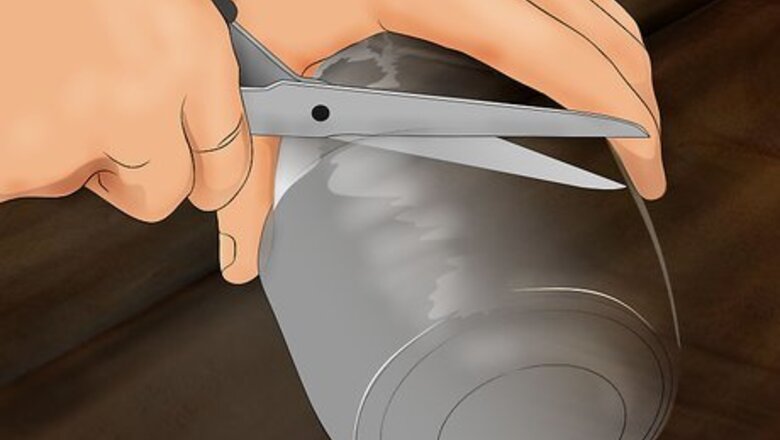
views
Simple Water Clock
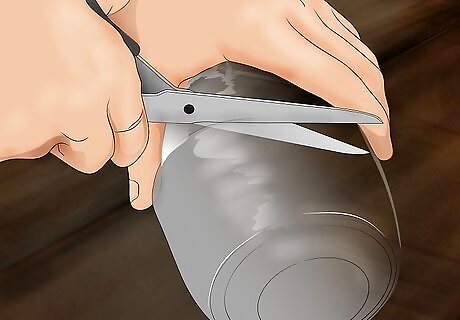
Cut the bottle in half. Use sharp scissors to cut a disposable plastic water bottle into two pieces. The top should ideally be only slightly shorter than the bottom. Note that you can create a larger water clock that tracks more time if you use a larger bottle, like a 2-L (2-qt) soda bottle.
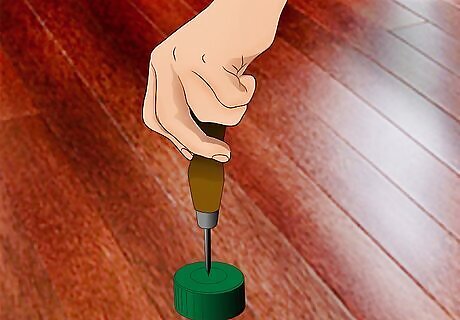
Puncture the lid. Use a bradawl or other tool with a sharp, narrow point to pierce the lid of the bottle, creating a small hole with a diameter of roughly 1/8 inch (3.175 mm). The hole should not be much larger than this, since a bottle with a hole that is too large will lose water too fast to be effective as a water clock. Alternatively, if you do not have a tool that can create a hole in the hard plastic lid, you can use a plastic cup instead of the top part of the bottle. Pierce the bottom of the cup with an embroidery needle or sewing needle to create a small hole.

Invert the upper part inside the lower part. Flip the top part of the bottle over so that the cap faces down. Slip this top part into the bottom portion of the bottle so that the cap rests 4 inches (10 cm) or so above the bottom of the lower half. Make sure that the cap does not touch the bottom of the bottle. The higher up it is, the better, as long as you can create a snug fit. If using a plastic cup instead of the top portion of the bottle, rest the cup inside the lower half of the bottle with the bottom of the cup facing down.
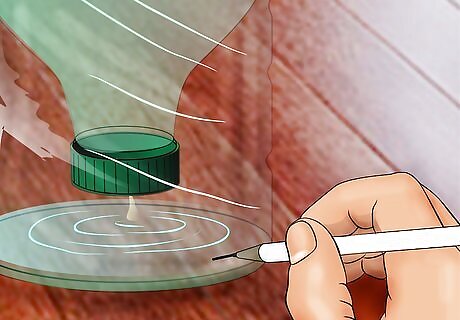
Measure and mark how many drops will fall within a certain amount of time. Pour water into your water clock and start timing the flow of water. Use a permanent marker to mark, on the lower half of the bottle, how much water falls within one minute. Repeat this for the second minute, third minute, and so on, until all the water originally poured into the upper half has dripped out.
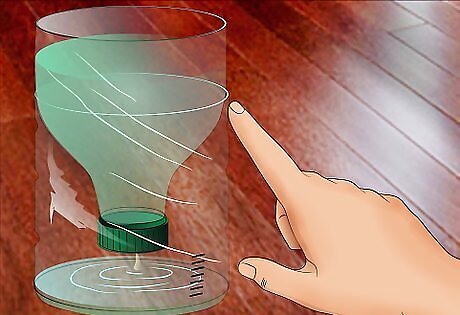
Use the water clock. Your clepsydra should now be complete. You can use it to measure the passage of time over several minutes.
Advanced Water Clock
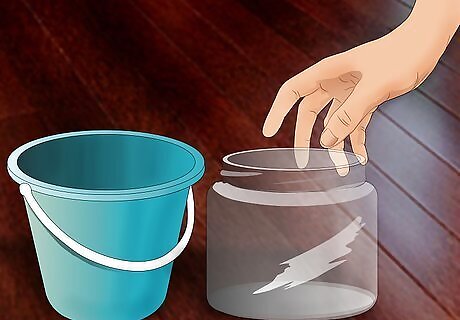
Choose two containers for your water clock. You will need two large containers for this version of the water clock. The two containers can be the same, or they can be different, but they should be roughly the same size so that they can hold the same amount of water. The larger the containers are, the more water they can hold and the more time they can track. Ideally, the bottom container should be clear so that you can read the measurement of time more easily. A glass vase or large plastic food storage bin would work well. Make sure that the bottom is flat so that the water pours in evenly. The top container can be clear or solid. Ideally, the bottom should not have any holes in it, but if it does, this can be corrected later on. Consider using flowerpots, buckets, or empty soup cans.
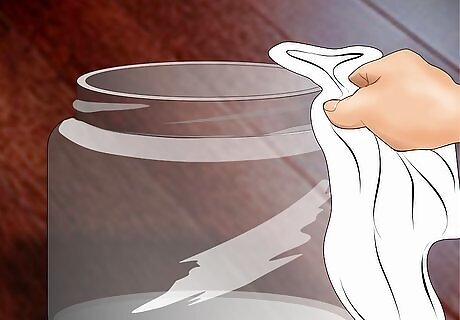
Prepare the containers. Both containers should be empty, clean, and free of holes. If either container has any holes in it, patch the holes with thick plumber's putty. Perform a water test on both containers to verify that there are no leaks. Fill the containers with water and let them sit for an hour or so. Check periodically to see if you can spot any leaks. After an hour passes, if there are no leaks, the containers can be used for your water clock.
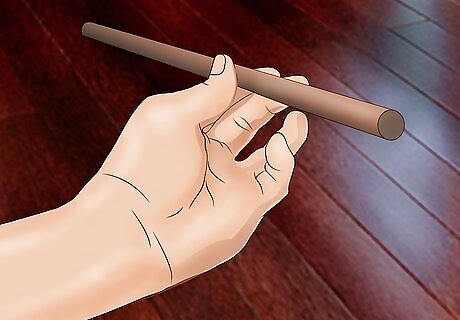
Prepare a wooden dowel for your float stick. Use a hacksaw to trim a wooden dowel down to a length of 2 feet (60.96 cm). This will serve as a guide and measurement gauge. The dowel must be sturdy, but it should not be heavy enough to push the cork or other buoyant material into the water.
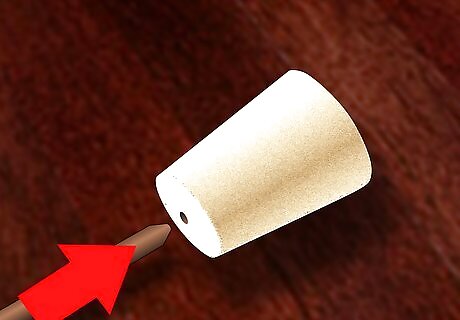
Assemble the float stick. Carefully hammer a nail into the top portion of a wine cork roughly halfway. Remove the nail, then insert the dowel into the hole. You need a buoyant material for the float stick, which is why a wine cork is used. Cork does not absorb water as time passes, either, which is another important feature for your float stick. Make sure that the dowel is firmly secured to the cork. It should not wiggle around or rotate, nor should it fall out.
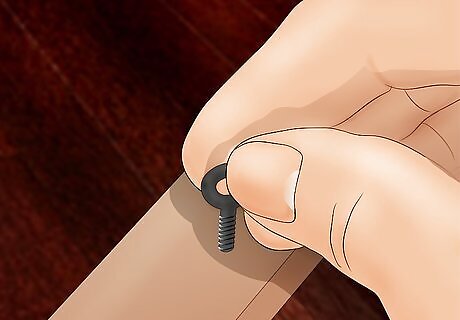
Fix two eyelet screws to a wooden stake. Use a hacksaw to cut a wooden stake down to a length of 2 feet (60.96 cm). Screw two eyelet screws into the stake at even intervals, roughly one-third the distance in from either end. Mark the center of the wood stake using a ruler and pencil. The center will be at about 3/8 inch (9.5 mm). This line should be a vertical one. Place the wood stake next to the bottom container. The bottom of the stake should be even with the bottom of the container. Make a pencil mark on the center line of the stake 1 inch (2.5 cm) above the top edge of the lower container. Place the float stick inside the container, near the same side as the stake. Make a mark on the center line 1 inch (2.5 cm) below the top of the float stick. The two eyelet screws should be screwed into these two measured marks. Hammer a nail into the marks, only sticking it in for one-quarter of its length. Remove the nail and screw the eyelets into both holes. These eyelet screws will secure the float stick in a vertical position, thereby reducing the amount of bobbing the stick will do and making it easier to accurately read the water clock once it is assembled. The dowel you use will need to fit into the eyelet screws comfortably and without much friction or tension. The screws are only meant as guides. They should not hold the float stick perfectly still.
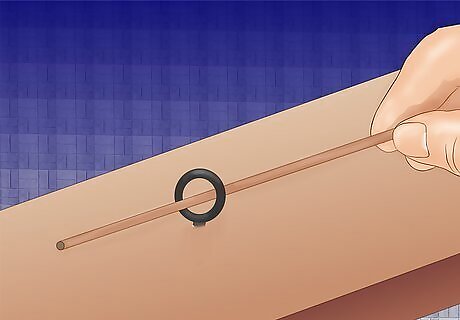
Insert the float stick into the eyelets. Insert the top end of the float stick up through the eyelet screws attached to the stake. Make sure that the top of the dowel extends through the top screw. The top end of the float stick is the side of the stick opposite of the cork. You should also make sure that there is no friction or tension between the eyelet screws and the float stick, since either one would restrict the float stick's ability to move freely and measure accurately.
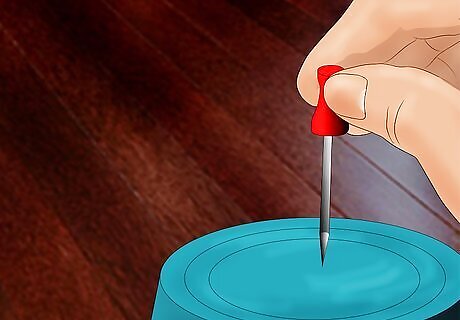
Create a small hole in the upper container. Use a pushpin to make a small hole through one side of the container, roughly 1/2 inch (1.25 cm) from the bottom. This hole will be the spot from which the water drains. If you are using a container made of metal, clay, or another thick material, you might need to use a thin nail to make the hole instead of a pushpin. Use the thinnest nail possible. You do not want to create a large hole, since the water will drain out too quickly and make the water clock fairly useless. Do not make a hole in an area previously covered with plumber's putty. The putty can change shape over time, making the hole larger and changing the rate of time it takes for the water to drip out. If you make a mistake, you should cover up the hole with plumber's putty and try to create a new one in a different spot.
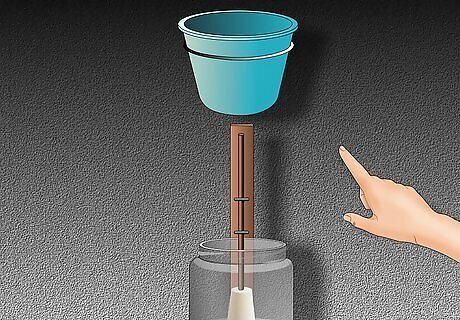
Assemble the water clock in the proper order. The upper container needs to be positioned over the lower container so that the water dripping out of the upper container can drip into the lower one. Attach the wooden stake to the lower container using strips of clear packing tape. Both the container and stake should stand vertically straight, and the float stick should be placed inside the lower container. Set the upper container on a ring stand or box and angle it so that the water from the upper container can drip down into the lower container without hitting the float stick. You do not need to secure the upper container to the lower container, but you should avoid bumping it as it runs, since doing so could make the results less accurate. Perform a quick test by running water through the system to verify that everything is in working condition.

Calibrate the clock. Before you can use your water clock to tell time, you need to calibrate the stick so that you can use it to gauge the passage of time. Use a permanent marker with a fine tip to draw a small line on the float stick, just above the bottom eyelet screw, and a matching line on the wood stick. These lines are your starting point. Mark it as "0 seconds." Set a kitchen timer for a set amount of time. For this version of the water clock, which should last for several hours, 30 minutes to 1 hour is ideal. Do not start it yet. Pour water into the upper container. Block the hole with your finger to prevent the water from flowing out yet. Use your marker to draw a line showing the starting water level on the inside of the upper container. Start the timer as soon as you uncover the hole on the upper container. After your set amount of time passes, use your marker to draw another line on your wood stick to match the line drawn on your float stick. Label this line with the correct amount of time. Continue to let the water drip out, marking every interval of 30 to 60 minutes on the stake, until all the water has dripped into the bottom container from the top.
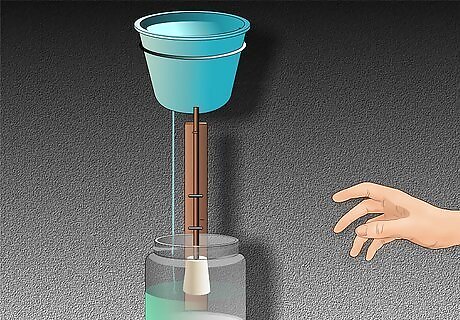
Use the water clock as desired. From this point on, your water clock should be able to accurately tell how much time has passed based on the current water level, as indicated by the calibrated gauge drawn on your wooden stake.




















Comments
0 comment